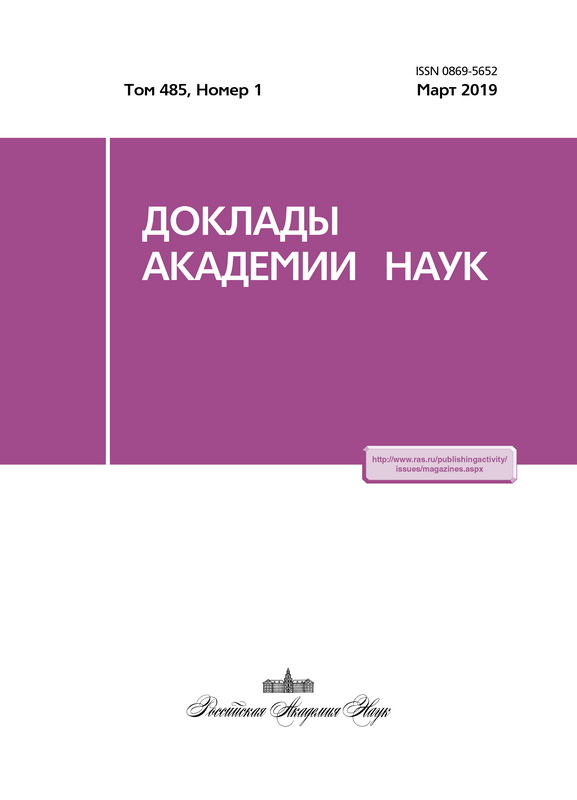Methane concentration and emission in dominant landscapes of typical tundra of Western Yamal
- Authors: Vasiliev A.A.1,2, Melnikov V.P.1,2, Semenov P.B.3, Oblogov G.E.1,2, Streletskaya I.D.4
-
Affiliations:
- Earth Cryosphere Institute of the Tyumen Scientific Center of the Siberian Branch of the Russian Academy of Sciences
- Tyumen State University
- All-Russian Research Institute of Geology and Mineral Resources of the World Ocean named after academician Igor Gramberg
- Lomonosov Moscow State University
- Issue: Vol 485, No 1 (2019)
- Pages: 88-92
- Section: Geography
- URL: https://journals.eco-vector.com/0869-5652/article/view/12912
- DOI: https://doi.org/10.31857/S0869-5652485188-92
- ID: 12912
Cite item
Abstract
Methane concentration in dominant landscapes of typical tundra of Western Yamal has been measured. The highest methane content in the active layer was measured in tundra bogs, wet gully bottoms, and polygonal tundra. Within these landscapes, methane concentration reaches 5000 ppm, while in other landscapes it does not exceed 300 ppm. Thus, only bogs, polygonal tundra, and gully bottoms, which occupy approximately 30–40% of the area, are the main sources of methane emission in the typical tundra zone. Measurements of methane emission to the atmosphere have been performed. During the summer maximum of emission, daily methane flux in bogs reaches 14.4 mg/m2 (20.3 ml/m2).
Keywords
About the authors
A. A. Vasiliev
Earth Cryosphere Institute of the Tyumen Scientific Center of the Siberian Branch of the Russian Academy of Sciences; Tyumen State University
Author for correspondence.
Email: al.a.vasiliev@gmail.com
Russian Federation, 86, Malypina str., Tyumen, Tyumen region, 625026; 6, Volodarskogo, Tyumen, 625003
V. P. Melnikov
Earth Cryosphere Institute of the Tyumen Scientific Center of the Siberian Branch of the Russian Academy of Sciences; Tyumen State University
Email: al.a.vasiliev@gmail.com
Academician of the RAS
Russian Federation, 86, Malypina str., Tyumen, Tyumen region, 625026; 6, Volodarskogo, Tyumen, 625003P. B. Semenov
All-Russian Research Institute of Geology and Mineral Resources of the World Ocean named after academician Igor Gramberg
Email: al.a.vasiliev@gmail.com
Russian Federation, 1, Angliysky Avenue, St. Petersburg, 190121
G. E. Oblogov
Earth Cryosphere Institute of the Tyumen Scientific Center of the Siberian Branch of the Russian Academy of Sciences; Tyumen State University
Email: oblogov@mail.ru
Russian Federation, 86, Malypina str., Tyumen, Tyumen region, 625026; 6, Volodarskogo, Tyumen, 625003
I. D. Streletskaya
Lomonosov Moscow State University
Email: oblogov@mail.ru
Russian Federation, 1, Leninskie gory, Moscow, 119991
References
- Васильев А. А., Мельников В. П., Стрелецкая И. Д., Облогов Г.Е. // ДАН. 2017. Т. 476. № 2. С. 213-216.
- Стрелецкая И. Д., Васильев А. А., Облогов Г. Е., Семенов П. Б., Ванштейн Б. Г., Ривкина Е. М. // Лед и снег. 2018. Т. 58. № 1. С. 65-77.
- AMAP Assessment 2015. Methane as an Arctic Climate Forcer. Arctic Monitoring and Assessment Programme (AMAP). Oslo, 2015. P. 139.
- Euskirchen E. S., Bret-Harte M.S., Shaver G. R., Edgar C. W., Romanovsky V. E. // Ecosystems. 2017. V. 20. P. 960-974. doi: 10.1007/s10021-016-0085-9.
- Kraev G., Schulze E.-D., Kholodov A., Chuvilin E., Rivkina E. // Atmosphere. 2017. V. 8. № 6. doi: 10.3390/atmos8060105.
- McGuire A.D., Christensen T. R., Hayes D., Heroult A., Euskirchen E. S., Kimball J. S., Koven C., Lafleur P., Miller P. A., Oechel W., Peylin P., Williams M., Yi Y. // Biogeosciences. 2012. V. 9. P. 3185-3204.
- Nozhevnikova A., Glagolev M., Nekrasova V., Einola J., Sormunen K., Rintala J. // Water Sci. Technol. 2003. V. 48. № 4. P. 45-52.
- Shakhova N., Semiletov I., Salyuk A., Yusupov V., Kos- mach D., Gustafsson О. // Science. 2010. V. 327. P. 1246-1250.
- Streletskiy D., Anisimov O., Vasiliev A. Permafrost Degradation. In: Snow and Ice-Related Hazards, Risks and Disasters. N.Y.: Elsevier, 2014. P. 303-343.
Supplementary files







